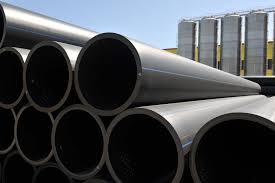Dec . 21, 2024 12:43 Back to list
pvc to hdpe pipe connection product
Connecting PVC to HDPE Pipes An Overview
In the modern world of plumbing and piping systems, different materials are frequently used to meet diverse needs. Among these materials, Polyvinyl Chloride (PVC) and High-Density Polyethylene (HDPE) stand out as two of the most popular options for pipe installation. Each has its own unique set of properties, advantages, and applications. However, there are occasions when it becomes necessary to connect PVC and HDPE pipes. This article will explore the methods, benefits, and considerations involved in connecting these two types of piping systems.
Properties of PVC and HDPE
PVC is a rigid plastic that is known for its durability and resistance to corrosion. It is lightweight, easy to install, and offers excellent chemical resistance, making it a preferred choice in plumbing and underground systems. Its applications range from residential piping to municipal water supply systems. However, PVC can become brittle over time when exposed to UV light unless it is properly treated or painted.
On the other hand, HDPE is a more flexible pipe material with superior resistance to impact and harsh environmental factors. It has excellent tensile strength, making it ideal for applications requiring durability like sewage systems and drainage. HDPE also offers a smooth interior finish, which allows for efficient fluid flow and reduces the likelihood of blockages. One of the most distinct advantages of HDPE over PVC is its ability to expand and contract with temperature changes, thus reducing the risk of cracks or leaks.
Reasons for Connecting PVC to HDPE
The need to connect PVC and HDPE pipes may arise from various situations. For instance, during renovation projects, existing PVC structures may need to connect to new HDPE installations. Additionally, when upgrading a system, a combination of both materials can offer benefits like enhanced flexibility and improved water management.
Another common scenario is the gradual transition from one material to another. For example, certain municipal water projects may utilize a combination of PVC for above-ground installations and HDPE for underground applications. By understanding the strengths and weaknesses of both materials, engineers and plumbers can design systems that maximize efficiency and reduce long-term maintenance costs.
Methods of Connection
Several methods can be employed to connect PVC to HDPE pipes effectively
pvc to hdpe pipe connection product

1. Mechanical Fittings These fittings are specially designed to bridge the gap between PVC and HDPE pipes. Mechanical couplings offer a strong and leak-proof seal and can accommodate different diameters of pipes. They are available in various designs, such as clamp-style or split-ring fittings, to suit specific installation needs.
2. Transition Adapters These are specialized fittings that facilitate the connection between different pipe materials. Transition adapters are often flanged or hubbed, allowing for easy integration while ensuring a robust connection.
3. Compression Fittings Compression fittings are another viable option, which allows for the joining of PVC and HDPE without requiring welding or gluing. These fittings work by compressing a rubber seal between the connection, creating a watertight seal.
4. Solvent Cement and Fusion Welding (Limited Use) Though not commonly recommended due to compatibility issues, in some cases, solvent cement can be used on PVC. HDPE, on the other hand, typically requires heat fusion welding. This method is not usually applicable for PVC-HIPE connections but may be mentioned in more complex situations.
Considerations
When connecting PVC to HDPE, it is crucial to consider factors like pipe diameter and pressure rating. Always ensure that the fittings and connections used are rated appropriately for the intended application to avoid failures or leaks. Additionally, consult relevant building codes and regulations that may dictate specific installation standards.
Temperature and environmental conditions should also be assessed. Since both PVC and HDPE behave differently under varying temperatures, understanding these characteristics will influence the longevity and reliability of the connection.
Conclusion
In the diverse world of plumbing and piping, the connection between PVC and HDPE pipes highlights the need for adaptability and innovation. By employing the right connection methods and understanding the properties of each material, engineers and contractors can create efficient, durable, and reliable piping systems. Whether in residential, industrial, or municipal applications, the ability to effectively connect PVC to HDPE can significantly enhance the system’s overall performance.
-
High-Quality PVC Borehole Pipes Durable & Versatile Pipe Solutions
NewsJul.08,2025
-
High-Quality PVC Perforated Pipes for Efficient Drainage Leading Manufacturers & Factories
NewsJul.08,2025
-
High-Quality PVC Borehole Pipes Durable Pipe Solutions by Leading Manufacturer
NewsJul.08,2025
-
High-Quality PVC Borehole Pipes Reliable PVC Pipe Manufacturer Solutions
NewsJul.07,2025
-
High-Quality UPVC Drain Pipes Durable HDPE & Drain Pipe Solutions
NewsJul.07,2025
-
High-Quality Conduit Pipes & HDPE Conduit Fittings Manufacturer Reliable Factory Supply
NewsJul.06,2025

